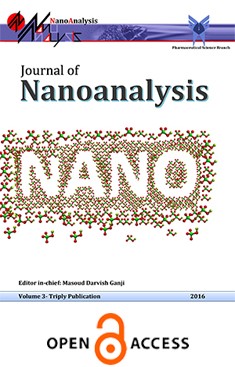Application of Imidazolium based ionic liquid Nano-emulsions for the removal of H2S from crude oil
محورهای موضوعی : Journal of NanoanalysisSahar Safarkhani 1 , Ali Akbar Miran Beigi 2 , Amir Vahid 3 , Abolghasem Mirhoseini 4 , Hoseinali Ghadirian 5
1 - Oil Refining Research Division, Research Institute of Petroleum Industry, Tehran, Iran | Department of environment pollution, Islamic Azad University, Yazd, Iran
2 - Oil Refining Research Division, Research Institute of Petroleum Industry, Tehran, Iran
3 - Oil Refining Research Division, Research Institute of Petroleum Industry, Tehran, Iran
4 - Department of environment pollution, Islamic Azad University, Yazd, Iran
5 - Department of environment pollution, Islamic Azad University, Yazd, Iran
کلید واژه: Optimization, Ionic liquids, Design of Experiments, Nano-emulsion, H2S, Scavenger,
چکیده مقاله :
Hydrogen sulfide is one of the most dangerous contaminants in crude oil and natural gas that have to be removed prior to the transfer and refining. In this study, hydrophobic ionic liquid, i.e. 1-ethyl-3-methylimidazolium methylflour, [EMIM] [NTf2], was used as scavenger for the reduction of the H2S. Due to its ionic nature, [EMIM] [NTf2] forms nanoemulsion in crude oil media and hence can dissolve H2S polar molecules within its core. Determination of H2S was carried out using well-known UOP-163 potentiometric titration. The effect of [EMIM] [NTf2] on the H2S concentration was investigated via two methods: dynamic and static. Dynamic method performed to check the effect of required dosage for the removal of H2S and also investigate effect of contact time. In the static methods a number of tests were designed with central composite design (CCD) to investigate the effect of three factors, i.e. scavenger dosage, reaction time and temperature, as well as the interaction between them on the concentration of H2S via response surface methodology (RSM). Among these three factors and according to the F value, scavenger dosage and time had the great influence on the response, respectively. In comparison, temperature had very low effect on the response. The resulted model was also statistically significant with non-important LOF index.


